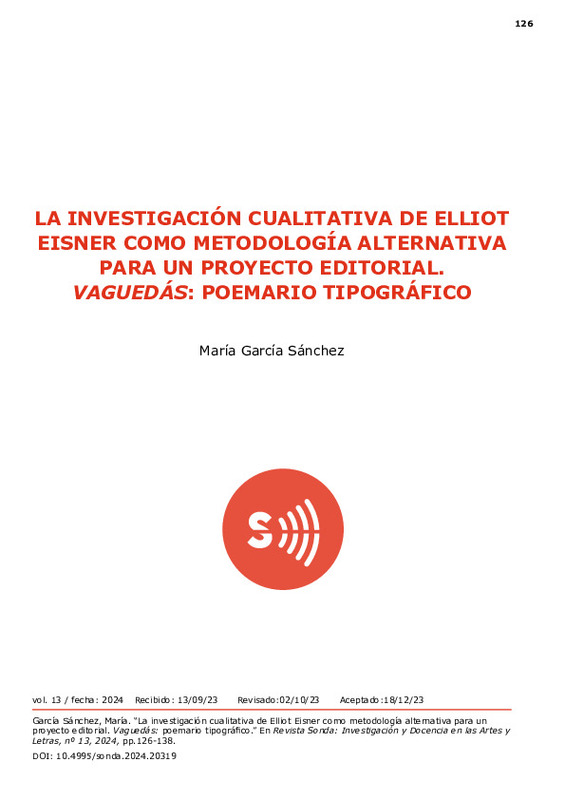JavaScript is disabled for your browser. Some features of this site may not work without it.
Buscar en RiuNet
Listar
Mi cuenta
Estadísticas
Ayuda RiuNet
Admin. UPV
La investigación cualitativa de Elliot Eisner como metodología alternativa para un proyecto editorial. Vaguedás: poemario tipográfico
Mostrar el registro completo del ítem
García Sánchez, M. (2024). La investigación cualitativa de Elliot Eisner como metodología alternativa para un proyecto editorial. Vaguedás: poemario tipográfico. Revista Sonda. Investigación en Artes y Letras. 13:126-138. https://doi.org/10.4995/sonda.2024.20319
Por favor, use este identificador para citar o enlazar este ítem: http://hdl.handle.net/10251/202955
Ficheros en el ítem
Metadatos del ítem
| Título: | La investigación cualitativa de Elliot Eisner como metodología alternativa para un proyecto editorial. Vaguedás: poemario tipográfico | |
| Otro titulo: |
|
|
| Autor: | García Sánchez, María | |
| Fecha difusión: |
|
|
| Resumen: |
[EN] The subject of study of the present text is directed towards the creation of a typographic poetry book, Vaguedás, with texts taken from the work of the poet Rosalía de Castro, Follas Novas (1880). From a theoretical ...[+]
[ES] El objeto de estudio del presente texto va encaminado hacia la creación de un poemario tipográfico propio, Vaguedás, con textos extraídos de la obra de la poeta Rosalía de Castro, Follas Novas (1880). Desde un ...[+]
|
|
| Palabras clave: |
|
|
| Derechos de uso: | Reconocimiento - No comercial - Compartir igual (by-nc-sa) | |
| Fuente: |
|
|
| DOI: |
|
|
| Editorial: |
|
|
| Versión del editor: | https://doi.org/10.4995/sonda.2024.20319 | |
| Tipo: |
|








